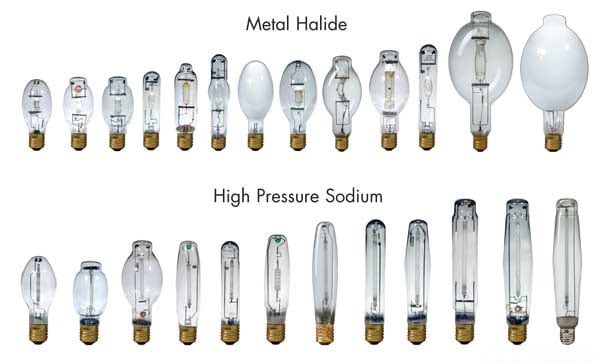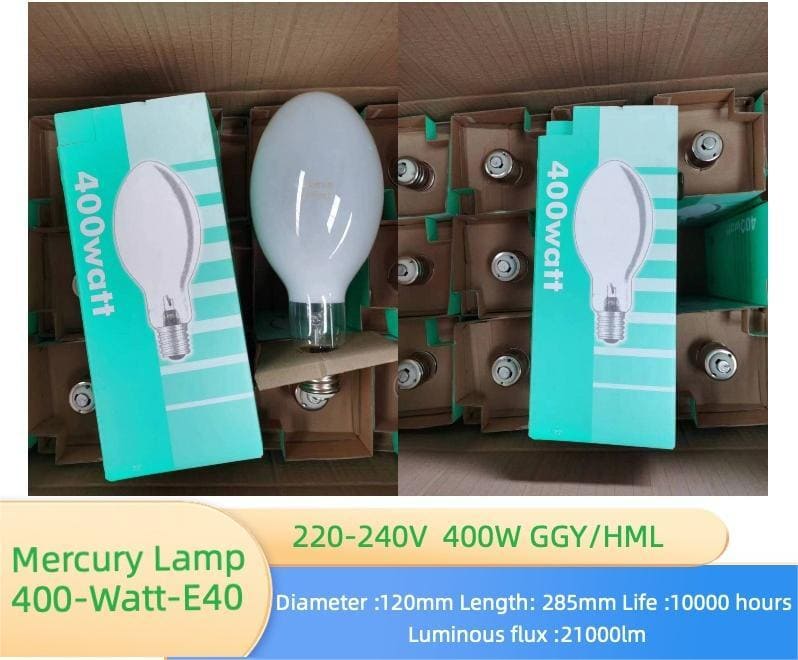High-Pressure Sodium (HPS) light bulbs are used a lot in industrial, commercial, and outdoor lighting because they are efficient and last a long time. However, most people don’t know what they are or how they work. This causes confusion when you want to light something like a street, parking lot, or you’re trying to grow plants inside. We’ll talk about what an HPS light bulb is and look at the good and bad things about them.
HPS (High-Pressure Sodium) light bulbs are gas-discharge lamps that make light by passing electricity through sodium vapor. They put off a yellow or amber light that is really efficient and great for outdoor and industrial lighting.
Knowing what HPS light bulbs are and how they work is important when you’re trying to pick the right lighting, especially for a big area where you need something that’s going to last and not use a ton of energy.
How HPS Light Bulbs Work
HPS bulbs are part of the gas-discharge lamp family, meaning they produce light through the excitation of gas inside a sealed tube. The basic principle behind their operation is that an electric current is passed through an arc tube filled with a mixture of gases, including sodium and mercury vapor. When the current flows, it excites the gases, causing them to emit light.
The primary light-emitting element in an HPS bulb is sodium, which is held inside the arc tube in a solid state until the bulb heats up. Once the sodium vaporizes, it produces a bright, warm yellow or amber glow that is characteristic of HPS lighting. The arc tube itself is typically made of a heat-resistant material like alumina to withstand the high internal temperatures.
The light produced by HPS bulbs is not instantaneous. They require a few minutes to warm up fully and reach their maximum brightness. During this warm-up period, the lamp gradually shifts from a dim glow to its full output as the sodium vapor inside the tube heats and ionizes.
Components of an HPS Bulb:
- Arc Tube: Contains sodium and mercury gases, where light production occurs.
- Ballast: Regulates the voltage and current supplied to the bulb, ensuring stable operation.
- Electrodes: Positioned at each end of the arc tube, these are responsible for initiating the flow of electricity through the gas.
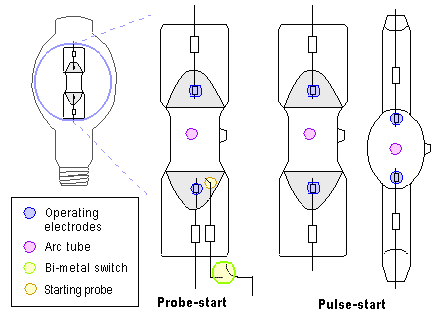
Common Applications of HPS Light Bulbs
HPS bulbs are used in various applications, primarily where large areas require bright, widespread illumination. Their efficiency, long life, and brightness make them suitable for both outdoor and industrial settings.
Street Lighting
HPS bulbs are one of the most common types of lighting used in street lamps. Their efficiency and ability to produce bright light over wide areas make them ideal for illuminating streets, highways, and public areas. The yellowish glow of HPS lights also reduces light pollution, which is another reason why they are popular in urban lighting systems.
Industrial and Commercial Use
In large spaces such as warehouses, parking lots, and industrial complexes, HPS lights are often the preferred option. Their high lumens per watt ratio ensures that vast areas can be well-lit without consuming excessive energy. HPS bulbs are also used in sports arenas and stadiums due to their powerful light output.
Horticultural Lighting
Interestingly, HPS lights have found a niche in indoor plant cultivation. Because they emit a light spectrum that is particularly beneficial for the flowering and fruiting stages of plant growth, they are commonly used in greenhouses and grow rooms. Their intensity and efficiency make them effective for sustaining plant life during periods when natural sunlight is insufficient.

Advantages of HPS Light Bulbs
HPS bulbs are known for several advantages, particularly in terms of energy efficiency and longevity.
Energy Efficiency
One of the main reasons HPS bulbs are favored for large-scale applications is their energy efficiency. Compared to traditional incandescent or halogen bulbs, HPS lights offer a much higher lumen output per watt. This means that they produce more light while consuming less energy, which is a significant benefit for municipalities and businesses looking to reduce energy costs over time.
For example, an HPS bulb can produce approximately 120 lumens per watt, whereas incandescent bulbs offer around 15 lumens per watt. This efficiency makes HPS lighting ideal for locations where lights need to stay on for long periods, such as street lights or industrial spaces.
Long Lifespan
HPS bulbs typically last between 12,000 and 24,000 hours, depending on the specific model and application. This long lifespan reduces the frequency of bulb replacements, which can be both costly and time-consuming in large-scale installations. The durability and long operating life of HPS bulbs make them particularly advantageous in settings where maintenance is difficult, such as in high-mounted street lights.
Cost-Effectiveness
Although HPS bulbs may have a higher initial cost compared to some other types of lighting, their energy efficiency and long lifespan make them a cost-effective option in the long run. The savings on energy consumption and maintenance outweigh the upfront investment, making HPS lights a practical choice for large outdoor lighting projects.
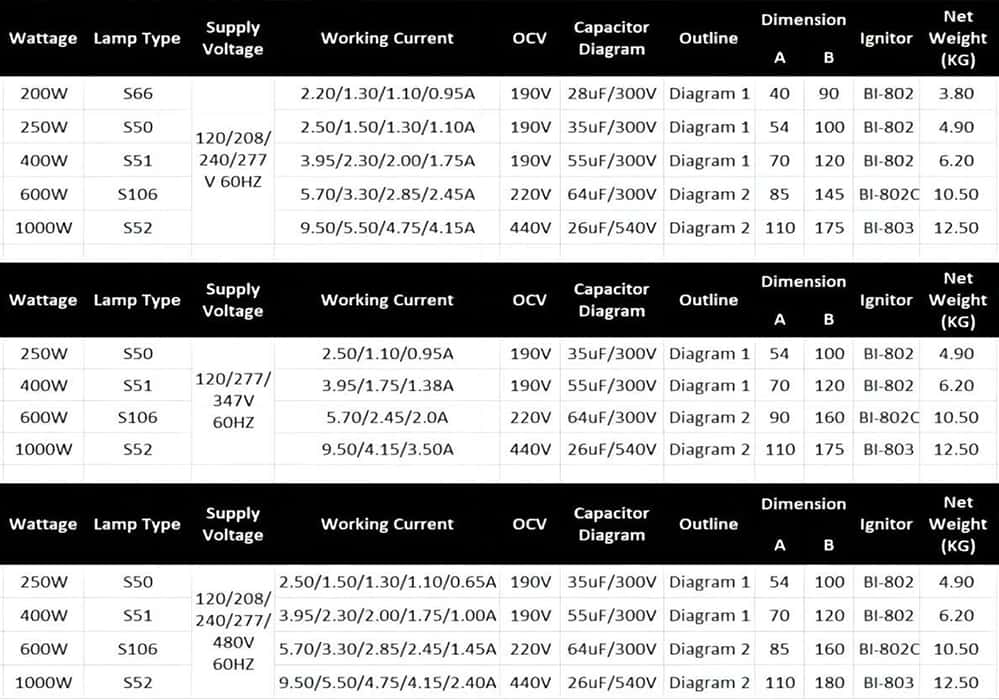
Disadvantages of HPS Light Bulbs
While HPS bulbs are efficient and long-lasting, they do have some notable drawbacks that should be considered before choosing them for a particular application.
Color Rendering
One of the most significant disadvantages of HPS lighting is its poor color rendering index (CRI). HPS bulbs emit a yellow or orange light that distorts the appearance of colors, making it difficult to distinguish between different shades. This can be problematic in areas where accurate color representation is important, such as retail settings or areas where safety is a concern. For example, under HPS lighting, it may be challenging to differentiate between certain colors in street signs or markings.
Warm-Up Time
HPS bulbs are not known for providing instant light. They take several minutes to warm up and reach their full brightness, which can be inconvenient in applications where immediate lighting is necessary. In addition, if an HPS bulb is turned off and immediately turned back on, it needs a “cool-down” period before it can reignite, further delaying the lighting process.
Environmental Concerns
HPS bulbs contain mercury, a hazardous substance that requires proper disposal to avoid environmental harm. Mercury can be toxic to humans and wildlife if not handled correctly, so used HPS bulbs must be recycled or disposed of in accordance with environmental regulations. The presence of mercury makes HPS bulbs less environmentally friendly than newer lighting technologies such as LED lights.
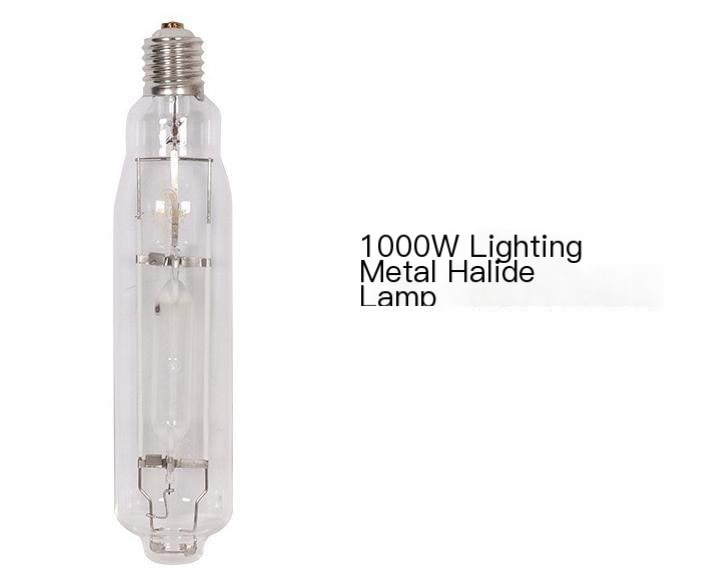
Alternatives to HPS Light Bulbs
As lighting technology advances, alternatives to HPS bulbs are becoming more common, offering improved efficiency, color rendering, and versatility.
LED Lighting
LED (Light Emitting Diode) technology has rapidly become the most popular alternative to HPS lighting. LEDs are more energy-efficient, offer better color rendering, and provide instant light without the warm-up time required by HPS bulbs. While the initial cost of LED bulbs can be higher, their superior efficiency and lifespan make them the preferred choice for many outdoor and industrial applications. Additionally, LEDs do not contain harmful substances like mercury, making them a more environmentally friendly option.
Metal Halide (MH) Bulbs
Another alternative to HPS bulbs is metal halide (MH) lighting, which provides better color rendering and is sometimes used in places where accurate color representation is crucial. However, MH bulbs are less energy-efficient than HPS lights and have a shorter lifespan, which makes them less cost-effective in the long run.
Low-Pressure Sodium (LPS) Bulbs
Low-Pressure Sodium (LPS) bulbs are even more efficient than HPS, but they have even worse color rendering. LPS bulbs produce a monochromatic yellow light, making them suitable for specific applications like street lighting in areas where energy savings are a top priority and color rendering is not important.
Final Words
HPS light bulbs are a good way to light up a big area with efficient lighting, especially outside and in industrial settings. They last a long time, are cost-effective, and are energy-efficient. That’s why a lot of people use them for street lighting, in warehouses, and even to grow plants.
However, they have some downsides like the bad color and slow warm-up time. That’s why a lot of people are looking at LEDs for some of these applications. Knowing what an HPS light bulb is and how it works will help you make a good choice for your lighting needs.

